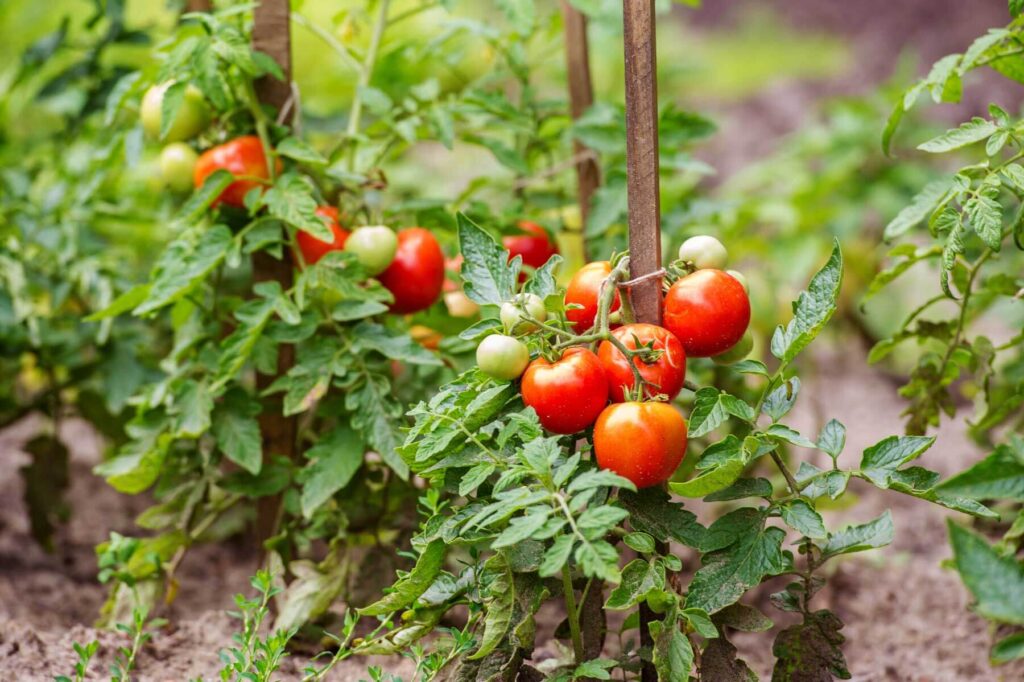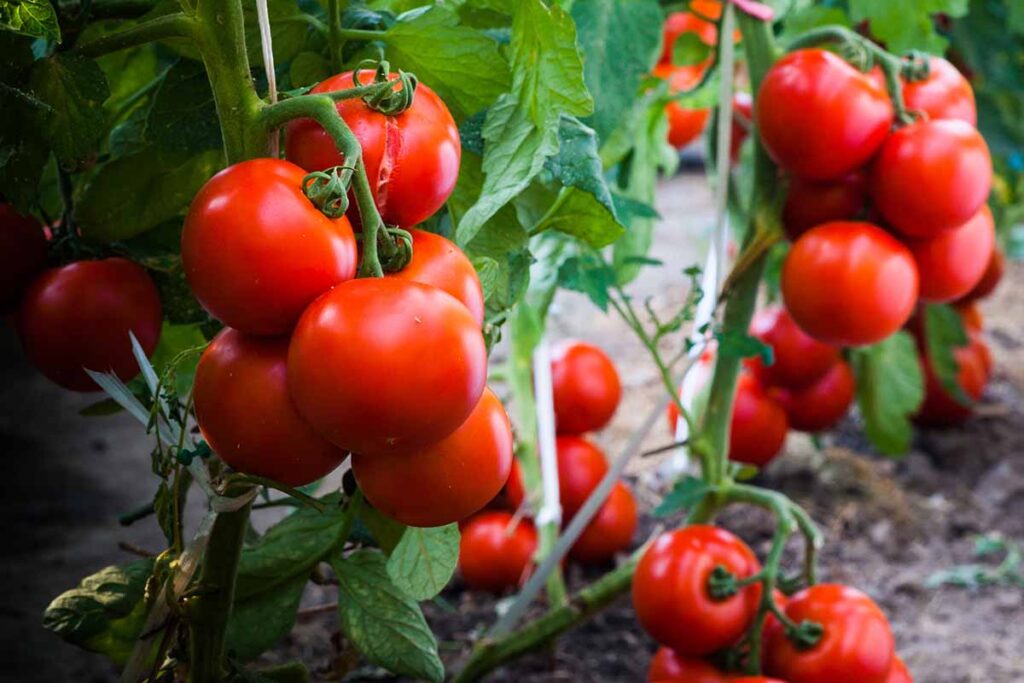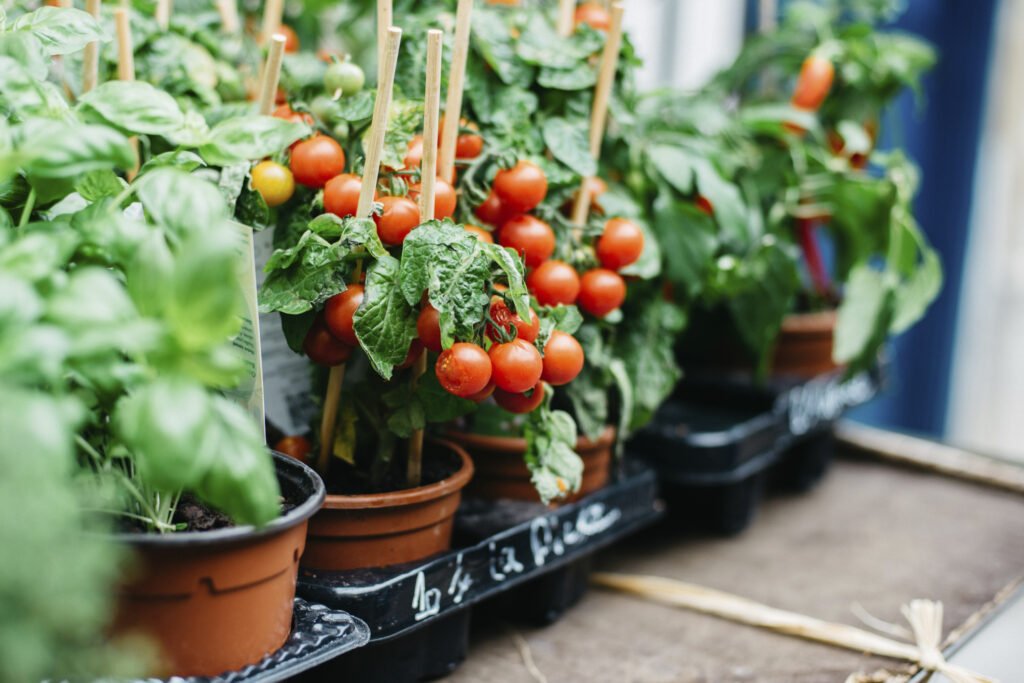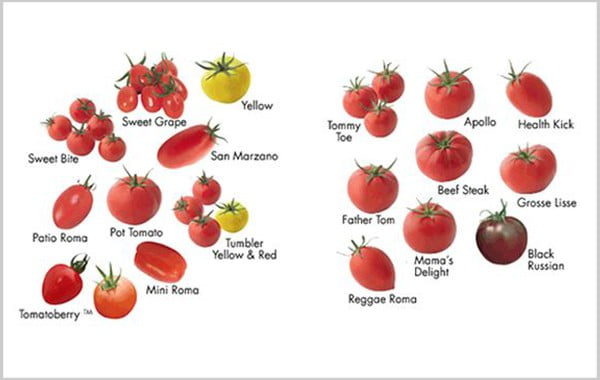Determining the most suitable season for planting tomatoes is a crucial decision for any aspiring gardener. With the success and growth of this popular fruit heavily dependent on environmental factors, knowing the optimal time to sow tomato seeds becomes paramount. In this article, you will explore the key considerations that come into play when deciding which season is best for planting tomatoes. By delving into the various factors affecting tomato cultivation, such as temperature, sunlight exposure, and soil conditions, you will gain valuable insights on how to maximize the growth and yield of your tomato plants. So, whether you are a seasoned gardener looking to fine-tune your tomato planting schedule or a beginner seeking guidance, this article will serve as a comprehensive resource to help you make informed decisions and cultivate healthy, thriving tomato plants.

Choosing the Right Season
When it comes to planting tomatoes, choosing the right season is essential for a successful harvest. Different seasons offer their own advantages and disadvantages, and considering these factors is crucial in determining the best time to plant tomatoes. By taking into account various factors such as climate, temperature, and regional considerations, you can make an informed decision on when to plant your tomatoes.
Factors to Consider
Several factors need to be taken into consideration when deciding which season to plant tomatoes. The most crucial factor is climate. Tomatoes thrive in warm weather, requiring temperatures between 70 and 85 degrees Fahrenheit for optimal growth. Additionally, the length of the growing season in your region must be considered. Some varieties of tomatoes take longer to mature than others, so you need to choose a season that provides enough time for your tomatoes to grow and ripen. Soil conditions also play a role, as tomatoes prefer well-draining, fertile soil.

Popular Tomato Varieties
Before delving into the specific advantages and disadvantages of each season, it is important to familiarize yourself with some popular tomato varieties. Different varieties exhibit unique traits, such as taste, size, and disease resistance. By selecting the right variety that suits your preferences and growing conditions, you can increase your chances of a successful harvest. Some popular tomato varieties include Beefsteak, Roma, Cherry tomatoes, and Heirloom tomatoes.
Spring Planting
Advantages
Spring planting offers several advantages for growing tomatoes. The gradually increasing temperatures in spring provide an ideal environment for tomato plants to thrive. Furthermore, spring planting allows tomatoes to produce fruits earlier in the growing season, ensuring an extended harvest period. This can be particularly advantageous if you live in a region with a short growing season.
Disadvantages
While spring planting has its advantages, there are also some disadvantages to consider. Spring weather can be unpredictable, with sudden changes in temperature and unexpected frost events. These conditions can damage or even kill young tomato plants. Additionally, soil moisture levels in spring can fluctuate, potentially affecting the growth and health of tomato plants.
Recommended Varieties
When it comes to spring planting, it is recommended to choose varieties that have a shorter maturity period, allowing them to mature and produce fruits before the weather turns too hot. Some suitable varieties for spring planting include Early Girl, Celebrity, or Sweet 100, which are known for their early maturity and ability to withstand cooler temperatures.

Summer Planting
Advantages
Summer planting offers its own set of advantages for growing tomatoes. The warm weather and longer days of summer provide favorable conditions for tomato plants to grow and produce an abundance of fruits. With adequate sunlight and warm temperatures, tomato plants can rapidly grow and ripen their fruits. Additionally, summer planting allows for a wider selection of tomato varieties, as the warmer weather is more conducive to the growth of various cultivars.
Disadvantages
Despite the advantages, there are some potential downsides to summer planting. The scorching heat of summer can be challenging for tomato plants, especially if the temperatures consistently reach above 90 degrees Fahrenheit. High temperatures can lead to poor fruit set, blossom drop, and reduced overall productivity. Moreover, the increased risk of pests and diseases during the summer months adds an extra layer of difficulty to tomato cultivation.
Recommended Varieties
When choosing tomato varieties for summer planting, it is important to select ones that are heat-tolerant and resistant to common diseases and pests. Some recommended varieties for summer planting include Sun Gold, Lemon Boy, or Black Krim. These varieties have proven to perform well in hot weather conditions.
Fall Planting
Advantages
Fall planting offers unique advantages for growing tomatoes. The cooler temperatures of fall provide relief from the scorching heat of summer, creating a more favorable environment for tomato plants. Additionally, fall planting allows for a second harvest season, extending the overall tomato production period. Moreover, tomatoes that mature during the cooler fall months often have enhanced flavor, as cooler temperatures can intensify their taste.
Disadvantages
Despite the advantages, there are some disadvantages to fall planting. The shorter days and decreasing sunlight in fall can affect the growth rate of tomato plants. Furthermore, the risk of early frost becomes a concern as the season progresses, potentially damaging or killing the tomato plants. Additionally, some tomato varieties may take longer to mature, requiring careful consideration of the remaining growing season.
Recommended Varieties
When it comes to fall planting, selecting varieties that have a shorter maturity period is crucial. Some recommended varieties for fall planting include Jetsetter, Bush Early Girl, or Oregon Spring. These varieties have faster maturity rates, allowing them to produce fruits before the arrival of frost.

Regional Considerations
Cold Regions
In cold regions where the growing season is shorter, it is often best to focus on spring and fall planting. Spring planting allows tomatoes to take advantage of the warmer temperatures and maximize the growing season. Fall planting, on the other hand, provides an opportunity for a second harvest season before the arrival of frost. Cold-tolerant varieties such as Siberian, Sub-Arctic Plenty, or Stupice are well-suited for these regions.
Moderate Regions
In moderate regions with milder climates, summer planting is often the preferred choice. The warm temperatures of summer facilitate rapid growth and fruit set, ensuring a bountiful harvest. Additionally, varieties that require longer growing periods can be successfully cultivated. Some recommended varieties for moderate regions include Better Boy, Brandywine, or Mortgage Lifter.
Hot Regions
In hot regions where temperatures consistently soar, planting tomatoes during the cooler months is advisable. Spring and fall planting are the best options, as they allow tomatoes to avoid the scorching temperatures of summer. Heat-tolerant varieties such as Heatwave II, Solar Fire, or Sunmaster are well-suited for hot regions.
Greenhouse Planting
Benefits
Greenhouse planting offers several benefits for tomato cultivation. By growing tomatoes in a controlled environment, you can extend the growing season and protect the plants from harsh weather conditions. Greenhouses provide consistent temperature and humidity levels, allowing for optimal growth and earlier harvests. Additionally, greenhouse-grown tomatoes are less prone to pests and diseases, reducing the need for chemical interventions.
Considerations
While greenhouse planting has numerous benefits, there are some considerations to keep in mind. Proper ventilation and air circulation are crucial in preventing disease outbreaks and ensuring the health of the tomato plants. Furthermore, greenhouse cultivation requires additional investments in equipment and infrastructure, such as heating and cooling systems, to maintain the ideal growing conditions.
Recommended Varieties
Several tomato varieties are well-suited for greenhouse planting. These include determinate varieties such as Mountain Spring, Early Cascade, or Celebrity. Determinate varieties are compact and typically reach a predetermined size, making them suitable for greenhouse environments with limited space.

Preparation and Timing
Soil Preparation
Proper soil preparation is vital for successful tomato planting. Tomatoes thrive in loose, fertile soil that provides adequate drainage. Prepare the soil by removing any weeds or debris, and incorporate organic matter such as compost or well-rotted manure to enrich the soil. Additionally, conducting a soil test to determine the pH level and nutrient content is recommended, as tomatoes prefer slightly acidic soil with a pH range of 6.0 to 6.8.
Seed Starting
Starting tomato seeds indoors allows for earlier planting and increased control over the growing conditions. Begin by selecting high-quality seeds and planting them in trays or pots filled with seed-starting mix. Maintain consistent moisture and temperature levels to encourage germination. Once the seedlings have developed their first true leaves, they can be transplanted into larger pots or trays to continue their growth until they are ready for transplantation in the garden.
Transplanting Timing
Transplanting your tomato seedlings at the right time is crucial for their successful establishment in the garden. As a general rule, tomato seedlings should be transplanted outdoors when the threat of frost has passed and soil temperatures have reached around 60 degrees Fahrenheit. This timing ensures that the young plants will not be subjected to cold temperatures, which can stunt their growth or damage them.
Tips for Successful Tomato Planting
Site Selection
Selecting the right site for planting tomatoes is essential. Choose a location that receives at least 6 to 8 hours of direct sunlight per day. Adequate sunlight ensures proper growth, development, and fruiting of the tomato plants. Additionally, ensure that the site has good air circulation to reduce the risk of disease and promote pollination.
Watering and Fertilizing
Proper watering and fertilization are crucial for healthy tomato plants. Tomatoes require consistent, deep watering to develop a strong root system. Water the plants at the base and avoid overhead irrigation, as wet foliage can promote diseases. Additionally, fertilize the plants regularly with a balanced fertilizer to provide them with the necessary nutrients for growth and fruit production.
Pruning and Support
Pruning and providing support for tomato plants can improve their overall health and productivity. Remove the sucker shoots that develop in the leaf axils, as they divert energy away from fruit production. Additionally, provide support for the plants by using stakes, cages, or trellises. Proper support prevents the plants from sprawling on the ground and reduces the risk of disease by improving air circulation.
Common Tomato Planting Mistakes
Avoiding Early Planting
One common mistake in tomato planting is planting too early in the season. Cold temperatures and frost can significantly damage or kill young tomato plants. To avoid this, wait until the threat of frost has passed and soil temperatures have warmed up before planting your tomatoes.
Improper Spacing
Planting tomatoes too closely together can lead to overcrowding, poor air circulation, and increased risk of diseases. Ensure that you space your tomato plants adequately, allowing sufficient room for the plants to grow to their full size and for air to flow freely between them.
Failure to Rotate Crops
Planting tomatoes in the same location year after year can lead to a buildup of pests and diseases in the soil. It is important to practice crop rotation by planting tomatoes in different areas of the garden each year. This helps prevent the depletion of soil nutrients and reduces the risk of diseases that may have lingered in the soil from the previous year.
Conclusion
Choosing the right season to plant tomatoes is crucial for a successful harvest. By considering factors such as climate, regional considerations, and the specific advantages and disadvantages of each season, you can make an informed decision on when to plant your tomatoes. Additionally, following proper preparation and timing techniques, as well as implementing tips for successful tomato planting, will further enhance your chances of a bountiful harvest. Avoiding common planting mistakes is equally important to ensure optimal growth, productivity, and overall plant health. With careful planning and proper execution, you can enjoy the satisfaction of growing and harvesting your own delicious, homegrown tomatoes.



